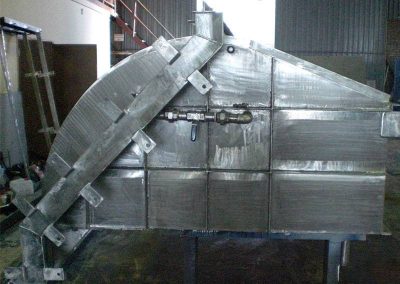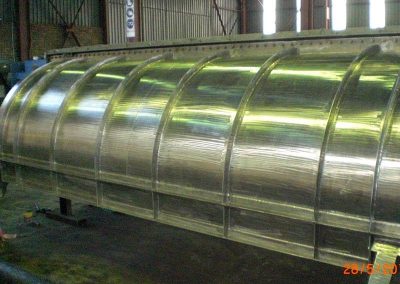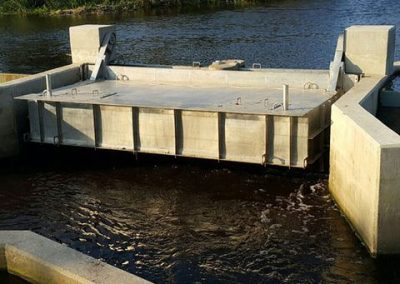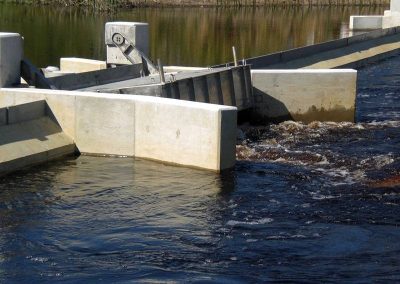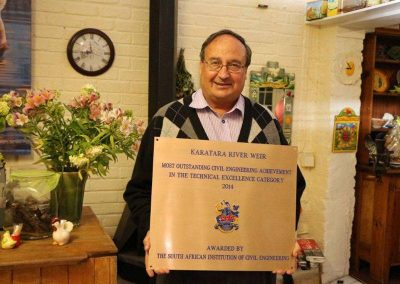Karatara River – South Africa
Project Overview
Statistics:
- Purpose: to prevent contamination of fresh water by saline water
- Type: Modified TOPS automatic gates to act in both up and downstream directions
- Size: 4,5m long by 1,3 m high
- № off: 2 identical gates
- Operating system: Fully automatic and self regulating by allowing water into and out of the ballast tank to suit upstream or downstream levels . The gates are activated by water levels only – no electrical or mechanical machinery.
- Manual override: yes, by opening or closing ball valves only
- Material: Stainless steel 316L and 304L
Location: Karatara River, Sedgefield, Western Cape, South Africa
Client: Knysna Regional Authority
Consultant: Tuniqua Consultans, Knysna
Manufacturer: Swift Engineering (Pty) Ltd, Mossel Bay
Scope of services: Design, Fabrication, Project Management, Installation, Commissioning
Completion: July 2013
Background
In 2010/11, the Sedgefield community in Western Cape suffered a severe drought. Their main supply of fresh water is from the Karatara River which flows into the large and attractive Swartvlei, a saline estuary with outlet / inlet to the sea.
During the drought, the river flow was minimal and the water level in the estuary increase over time to cause saline water to push up the Karatara River and consequently made the water treatment works inoperable.
As drought relief measure, a low weir was constructed across the river which incorporated two TOPS Estuarine gates. The consultant required gates which would open automatically to pass floods with minimal backup so as not to flood upstream properties, but also to remain closed as a barrier to the ingress of saline water from Swartvlei. Importantly, the gates had to be fully automated and self actuating as it is a remote site which did not support any electrical driven actuation and control systems.
Description
Two TOPS ESTUARINE gates were fitted to the weir. Each gate is 4,5 m long by 1,3 m high. These gates are unique in their performance and to Amanziflow knowledge do not exist anywhere else in the world. The ballast tank is connected to both the upstream and downstream water levels such that:
- If the saline water level rises above the upstream fresh water level, saline water will enter the ballast tank to keep the gate closed against the ingress of saline water migrating into the fresh water pool upstream.
- Fresh water can fill the ballast tank to allow the gate to remain closed to store valuable fresh water in the river reach during periods of peak demand on water (holiday seasons)
- Open automatically to pass floods with minimal increase in upstream water level.
The gates are fabricated in stainless steel. They have operated in floods in July 2013. These TOPS gates, adapted to act as Estuarine gates will be useful as protection barriers for inland areas subjected to tidal flooding from rivers or estuaries.


